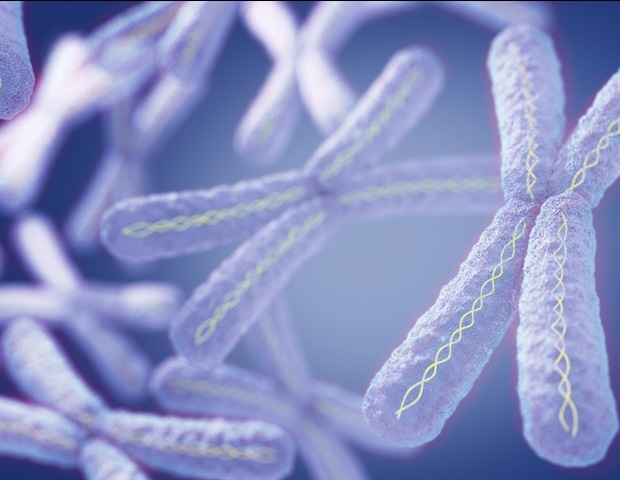Fluorescent sensors, which can be utilized to label and picture all kinds of molecules, provide a novel glimpse inside dwelling cells. Nevertheless, they sometimes can solely be utilized in cells grown in a lab dish or in tissues shut to the floor of the body, as a result of their sign is misplaced when they’re implanted too deeply.
MIT engineers have now give you a manner to overcome that limitation. Utilizing a novel photonic approach they developed for thrilling any fluorescent sensor, they had been in a position to dramatically enhance the fluorescent sign. With this strategy, the researchers confirmed they could implant sensors as deep as 5.5 centimeters in tissue and nonetheless get a robust sign.
This type of technology could enable fluorescent sensors to be used to track particular molecules inside the mind or different tissues deep inside the body, for medical prognosis or monitoring drug results, the researchers say.
When you’ve got a fluorescent sensor that may probe biochemical info in cell tradition, or in skinny tissue layers, this technology permits you to translate all of these fluorescent dyes and probes into thick tissue.”
Volodymyr Koman, MIT analysis scientist and certainly one of the lead authors of the new research
Naveed Bakh SM ’15, PhD ’20 can be a lead creator of the paper, which seems right now in Nature Nanotechnology. Michael Strano, the Carbon P. Dubbs Professor of Chemical Engineering at MIT, is the senior creator of the research.
Enhanced fluorescence
Scientists use many various sorts of fluorescent sensors, together with quantum dots, carbon nanotubes, and fluorescent proteins, to label molecules inside cells. These sensors’ fluorescence will be seen by shining laser mild on them. Nevertheless, this does not work in thick, dense tissue, or deep inside tissue, as a result of tissue itself additionally emits some fluorescent mild. This mild, known as autofluorescence, drowns out the sign coming from the sensor.
“All tissues autofluorescence, and this turns into a limiting issue,” Koman says. “As the sign from the sensor turns into weaker and weaker, it turns into overtaken by the tissue autofluorescence.”
To beat this limitation, the MIT staff got here up with a manner to modulate the frequency of the fluorescent mild emitted by the sensor in order that it may be extra simply distinguished from the tissue autofluorescence. Their approach, which they name wavelength-induced frequency filtering (WIFF), makes use of three lasers to create a laser beam with an oscillating wavelength.
When this oscillating beam is shined on the sensor, it causes the fluorescence emitted by the sensor to double its frequency. This enables the fluorescent sign to be simply picked out from the background autofluorescence. Utilizing this method, the researchers had been in a position to improve the sensors’ signal-to-noise ratio greater than 50-fold.
One potential software for this type of sensing is to monitor the effectiveness of chemotherapy medication. To show this potential, the researchers centered on glioblastoma, an aggressive kind of mind most cancers. Sufferers with the sort of most cancers normally endure surgical procedure to take away as a lot of the tumor as potential, then obtain the chemotherapy drug temozolomide (TMZ) to strive to eradicate any remaining most cancers cells.
This drug can have critical uncomfortable side effects, and it would not work for all sufferers, so it might be useful to have a manner to simply monitor whether or not it is working or not, Strano says.
“We’re engaged on technology to make small sensors that could be implanted close to the tumor itself, which may give a sign of how a lot drug is arriving at the tumor and whether or not it is being metabolized. You could place a sensor close to the tumor and confirm from outdoors the body the efficacy of the drug in the precise tumor surroundings,” he says.
When temozolomide enters the body, it will get damaged down into smaller compounds, together with one often called AIC. The MIT staff designed a sensor that could detect AIC, and confirmed that they could implant it as deep as 5.5 centimeters inside an animal mind. They had been in a position to learn the sign from the sensor even via the animal’s cranium.
Such sensors could even be designed to detect molecular signatures of tumor cell loss of life, akin to response oxygen species.
“Any wavelength”
As well as to detecting TMZ exercise, the researchers demonstrated that they could use WIFF to improve the sign from a wide range of different sensors, together with carbon-nanotube-based sensors that Strano’s lab has beforehand developed to detect hydrogen peroxide, riboflavin, and ascorbic acid.
“The approach works at any wavelength, and it may be used for any fluorescent sensor,” Strano says. “As a result of you will have a lot extra sign now, you possibly can implant a sensor at depths into tissue that weren’t potential earlier than.”
For this research, the researchers used three lasers collectively to create the oscillating laser beam, however in future work, they hope to use a tunable laser to create the sign and enhance the approach even additional. This could turn out to be extra possible as the worth of tunable lasers decreases and so they turn out to be quicker, the researchers say.
To assist make fluorescent sensors simpler to use in human sufferers, the researchers are engaged on sensors which might be biologically resorbable, so they might not want to be surgically eliminated.
The analysis was funded by the Koch Institute for Integrative Most cancers Analysis and Dana-Farber/Harvard Most cancers Heart Bridge Undertaking. Extra funding was offered by the Swiss Nationwide Science Basis, the Japan Society for the Promotion of Science, the King Abdullah College of Science and Technology, the Zuckerman STEM Management Program, the Israeli Science Basis, and the Arnold and Mabel Beckman Basis.
Supply:
Massachusetts Institute of Technology
Journal reference:
Koman, V.B., et al. (2022) A wavelength-induced frequency filtering technique for fluorescent nanosensors in vivo. Nature Nanotechnology. doi.org/10.1038/s41565-022-01136-x.













